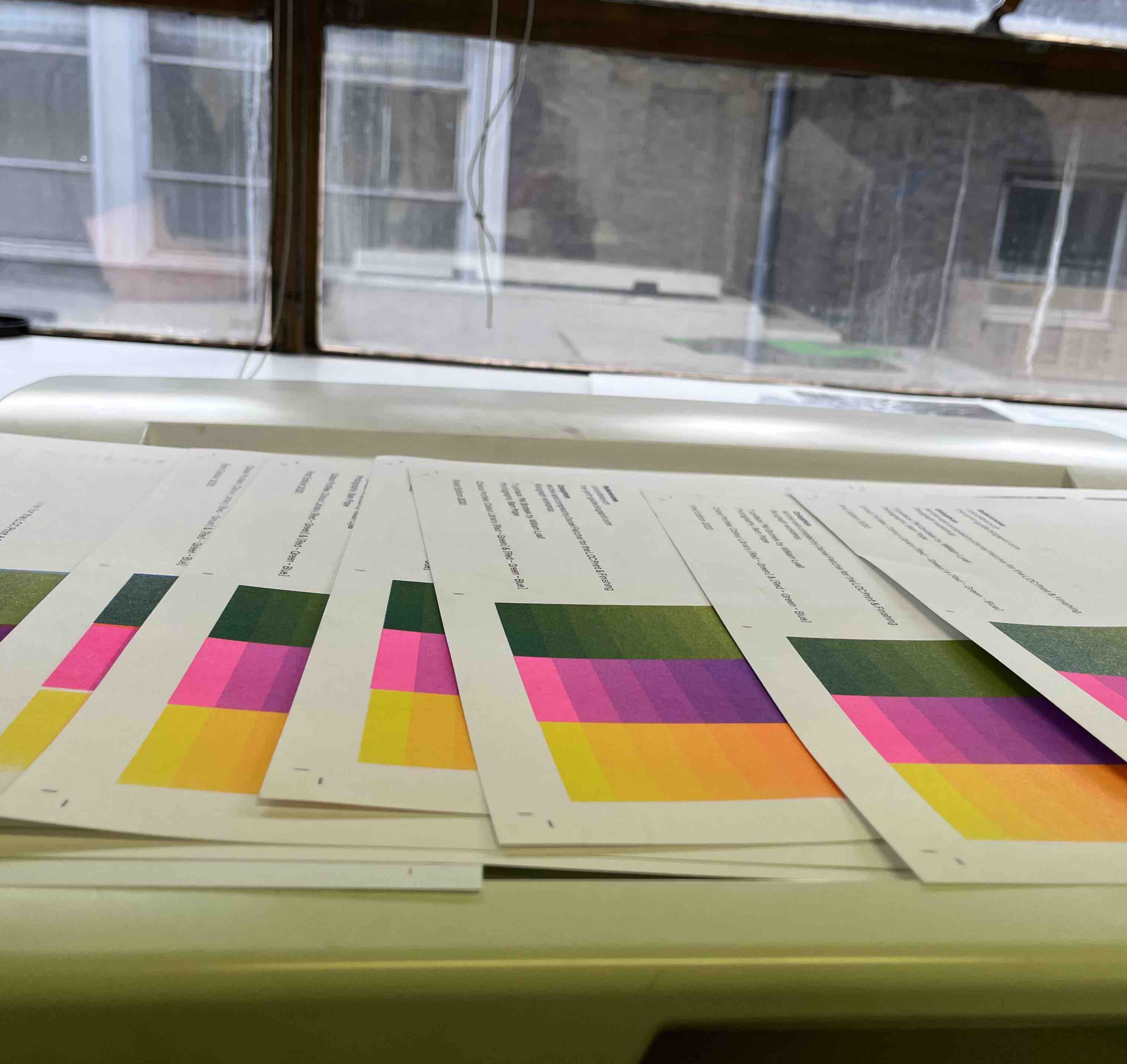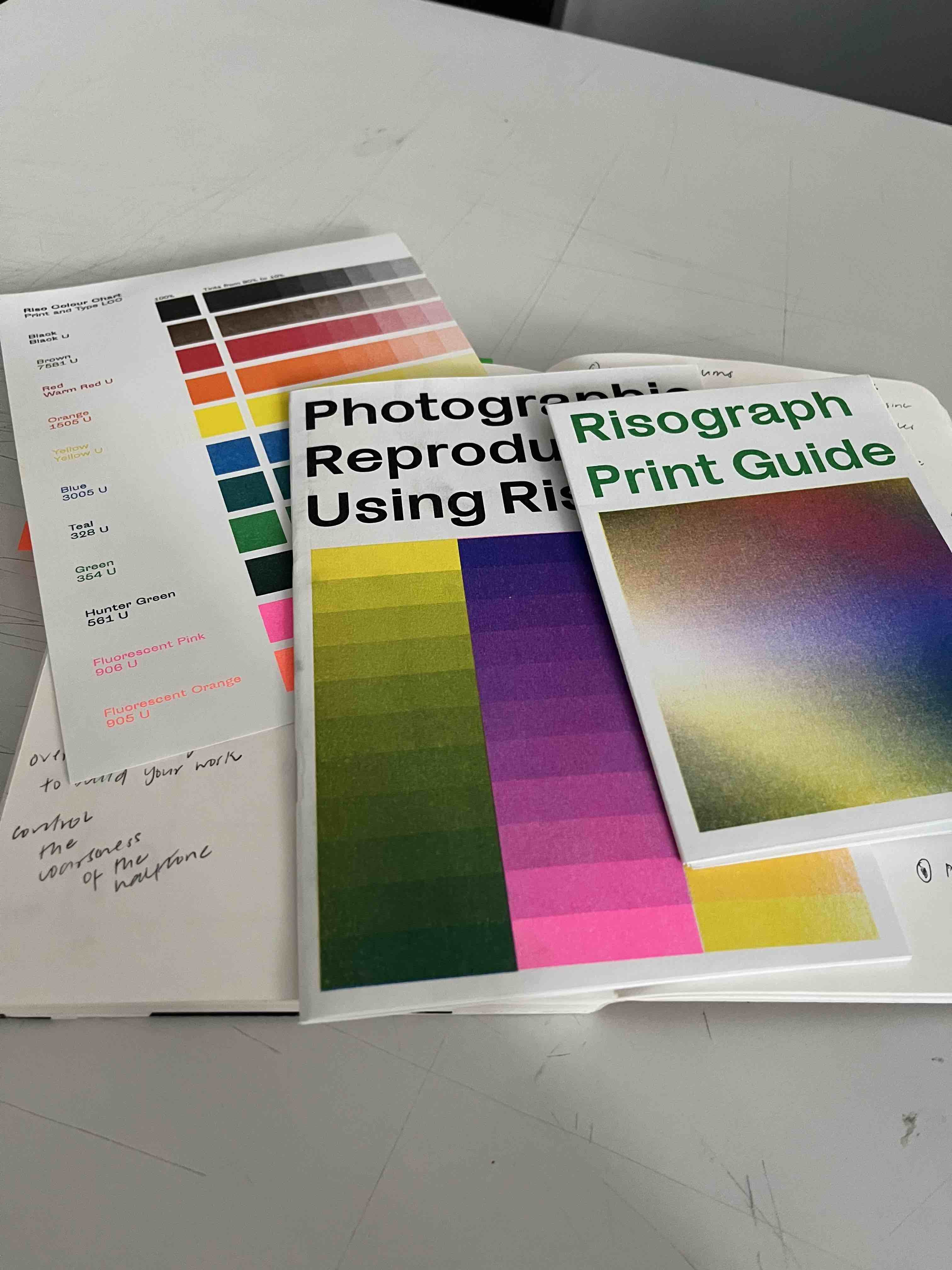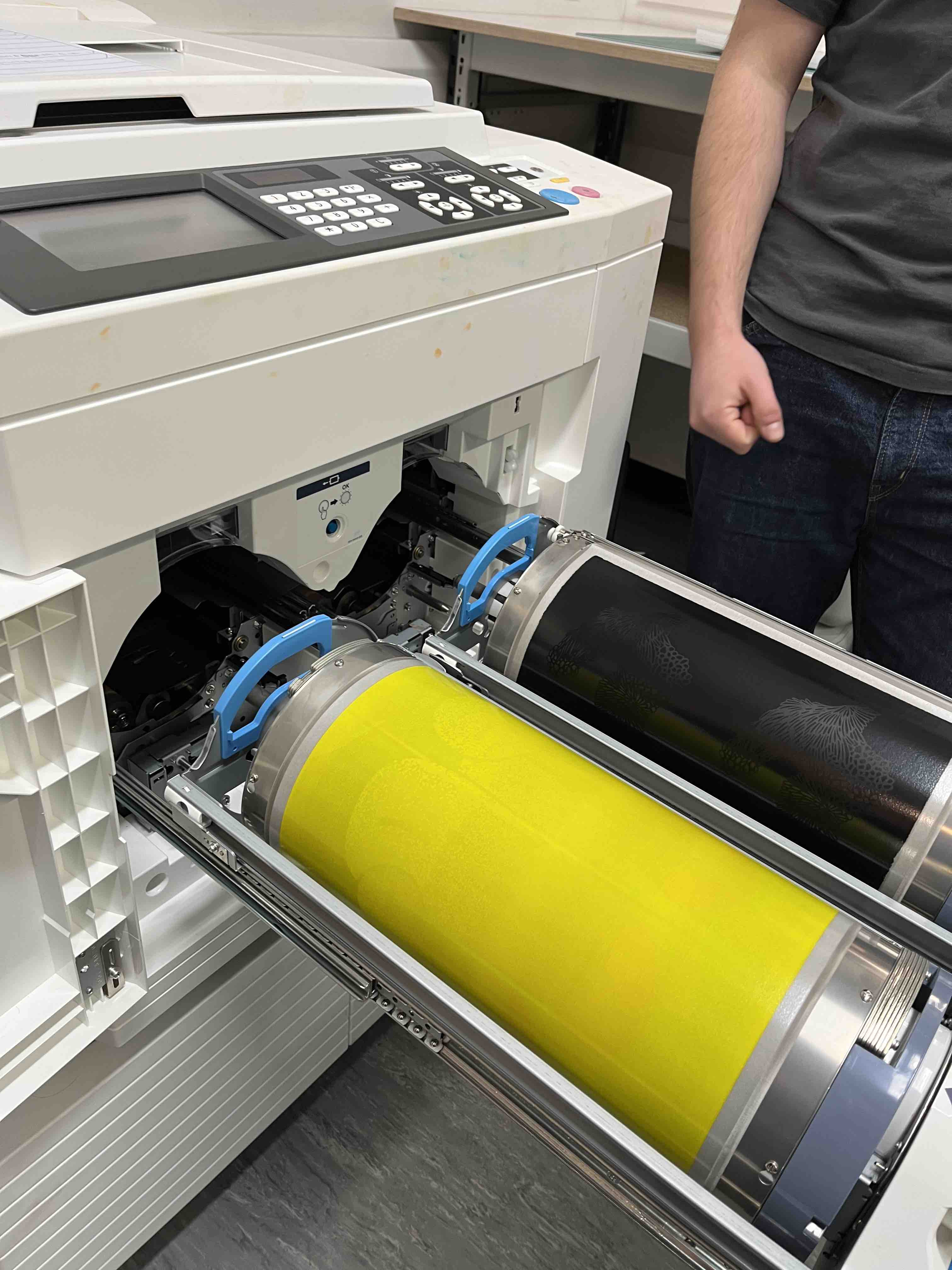Week 09
It was a pretty exciting week thanks to Andy Kirk, from getting a sneak peek into RJ Andrews' stunning latest book to meeting some fantastic people that I've admired.


This week has been filled with a lot of thinking, reading and doing. I've been thinking critically about visceral data experiences and gathering my thoughts to write an essay around it.
I'm also making progress on my data-driven cushion cover project in response to the formative assessment brief.

The project began with the observation that nearly all my peers have moved home & countries to be here. We share common emotions around shifting to & getting acclimated to a new environment, culture, weather & food. I attempt to surface the small pleasures that have remained constant & are a source of comfort & familiarity.
I conducted open-ended discovery interviews with a few peers to understand their notions around comfort. The qualitative data collected was used to identify & categorise different aspects of comfort such as food choices, preferred weather & working environment. Guided by some of the responses from the interviews, I iterated on different phrases associated with each category & finalised a set of descriptors that felt both broad & complete.
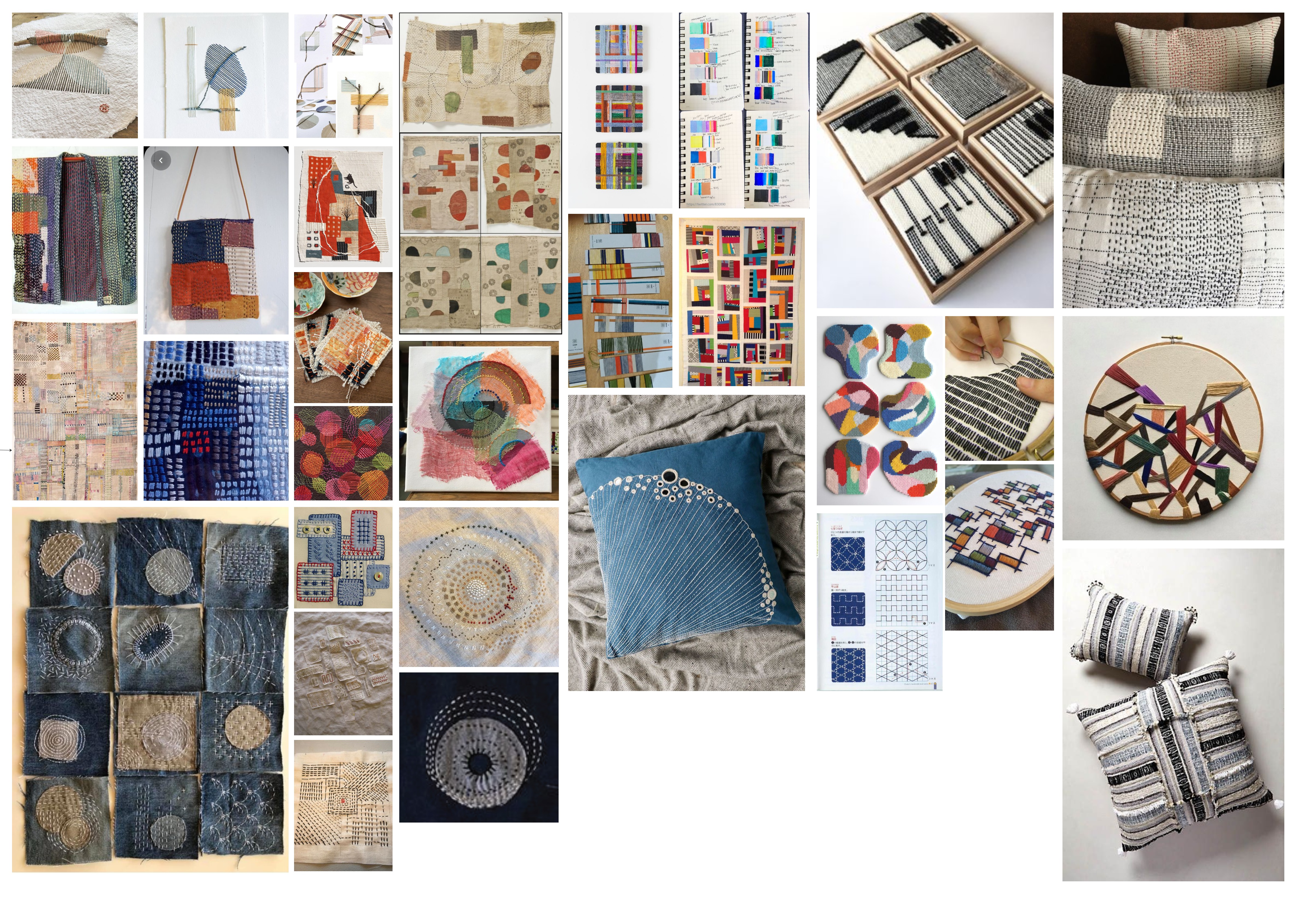
Textiles have often been used as a medium for visualising data. To take advantage of the tactility of the medium, I also collected various sewing patterns & looked at visual treatments that can be achieved through this material. I used this understanding to iterate on different encodings for my data.

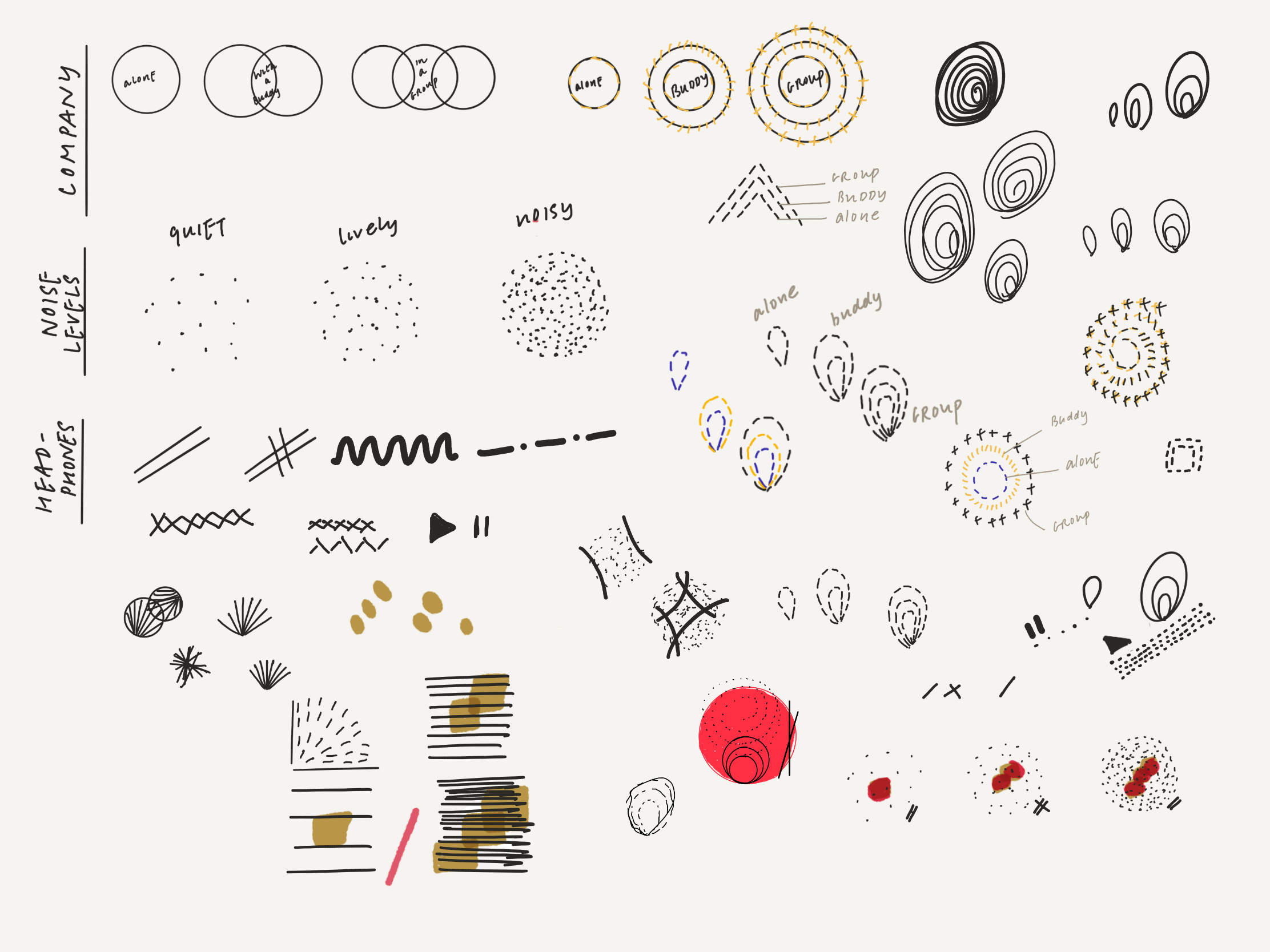

I began my sketch iterations by encoding each layer of information using charts as the base. I used basic stitching patterns for the visual language. The color palettes were extracted from home interiors emulating a feeling of relaxation and comfort.
Prototyping with material
I wanted to put my stitch patterns to the test, so I used felt cloth and floss.


Prototyping with code
Once I was satisfied with my direction, I moved on to prototype with code. I mapped the data to my visuals using p5.js, which I will then host on a webpage for my peers to interact with and generate their own.

I also took part in a Risograph session and it felt great to be in the print room after months. Riso sits right between silk screen printing and digital printing. The fact that it uses tactile uncoated paper and that the ink absorbs into the fibres of the paper but never fully dries is an intriguing feature that I want to explore further. It has a vibrancy and controllable characteristics such as coarseness, angle, frequency, and tints, and I would love to experiment with these elements as a way of encoding in my visualisations.
